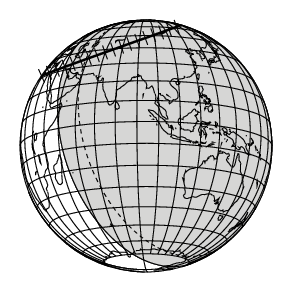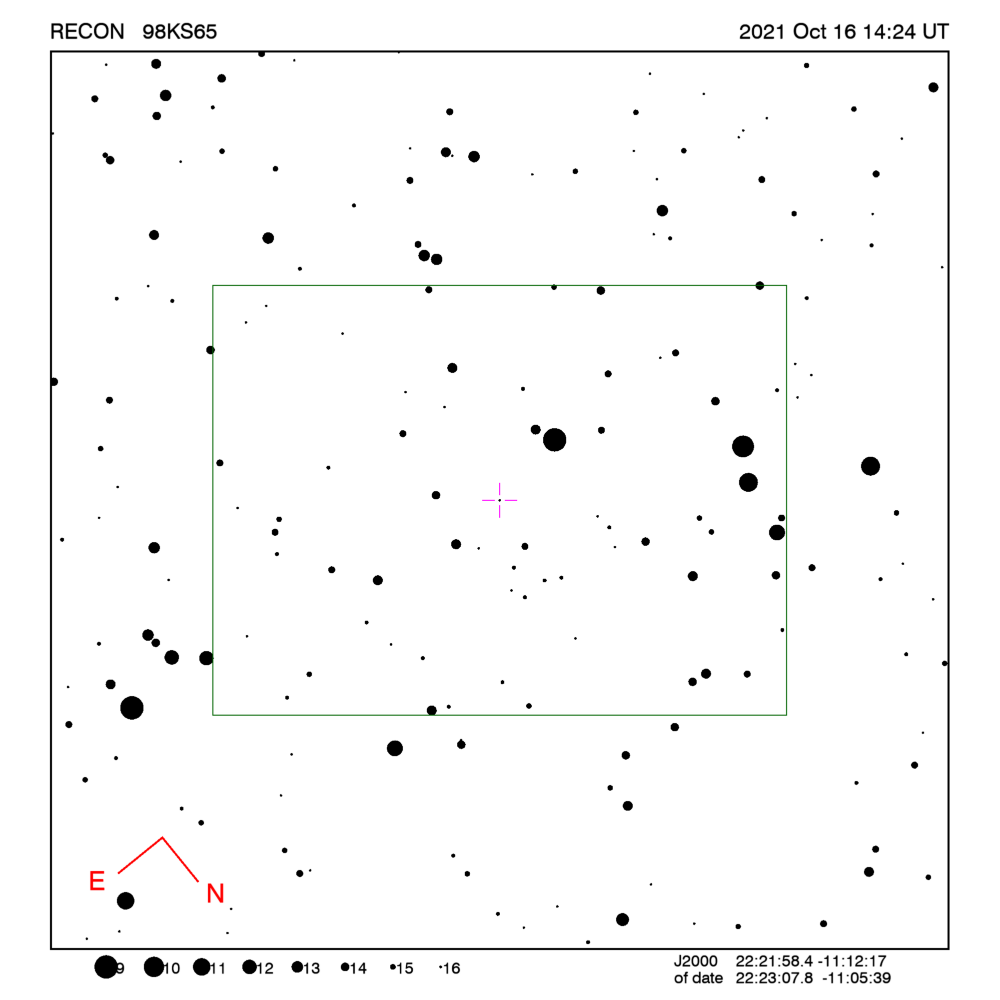RECON: TNO occultation with 98KS65
Event between 98KS65 and star GA0780:22004622
with event index number of 2428328
Geocentric closest approach at 2021/10/16 14:24:04 UTC
J2000 position of star is 22:21:58.4 -11:12:17
Equinox of date position of star is 22:23:07.6 -11:05:41
Stellar brightness G=16.7,
use SENSEUP=128 with the MallinCam and and exposure
time of 2 seconds with the QHY174 camera.
Star is 5 degrees from the moon.
Moon is 84% illuminated.
TNO apparent brightness V=24.1
 TNO is 42.5 AU from the Sun
and 41.9 AU from the Earth.
TNO is 42.5 AU from the Sun
and 41.9 AU from the Earth.
The TNO is moving 14.2
km/sec on the sky relative to the star, or,
1.7 arcsec/hr.
The 1-sigma error in the time of the event is 747 seconds.
The 1-sigma cross-track error in the shadow position is
4464 km.
The TNO has an absolute magnitude Hv=7.7
Diameter=176.2 km assuming a 5% albedo -- 12.4 sec chord
Diameter=71.9 km assuming a 30% albedo -- 5.1 sec chord
Dynamical classification is CLASSICAL
Star training set for 98KS65, (2021/10/16 14:24UT)
Object RA Dec mag sep mel
Fomalhaut 22:58:51.0 -29:30:23 1.2 20.21 16
42 Aqr 22:17:57.9 -12:43:19 5.1 2.06 6
PPM 240220 22:25:40.2 -11:02:44 8.1 0.63 5
PPM 240162 22:22:58.1 -11:06:01 9.5 0.04 5
98KS65 22:23:07.8 -11:05:39 16.7 5
Positions are for equinox of date

Azimuth is measured in degrees eastward from north.
North is at an azimuth of 0, due East is at an azimuth
of 90 degrees, due South is 180, and due West is 270.
Do not use the listing below for the RECON CPC 1100 telescopes.
This is provided for other non-team facilities.
Star training set for 98KS65, (2021/10/16 14:24UT)
Object RA Dec mag sep mel
Fomalhaut 22:57:39.6 -29:37:24 1.2 20.21 16
42 Aqr 22:16:48.0 -12:49:53 5.1 2.06 6
PPM 240220 22:24:30.9 -11:09:23 8.1 0.63 5
PPM 240162 22:21:48.7 -11:12:39 9.5 0.04 5
98KS65 22:21:58.4 -11:12:17 16.7 5
Positions are for J2000
Event circumstances last updated at 2021/09/20 23:56:41 UT
Marc W. Buie,
Southwest Research Institute
RECON
 TNO is 42.5 AU from the Sun
and 41.9 AU from the Earth.
TNO is 42.5 AU from the Sun
and 41.9 AU from the Earth.
